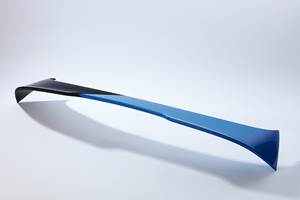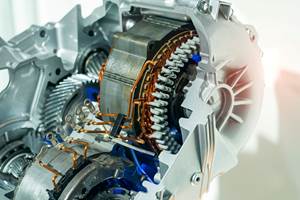Ramping up to the carbon fiber supply challenge
HPC guest columnist Tom Lemire, president of T.F. Lemire Consulting Inc. (Irvine, Calif.), comments on the necessary response of carbon fiber suppliers to the likely increasing demand for carbon fiber in the coming years.
The announcement on June 30, this year, that Mitsubishi Rayon Co. (MRC) would double its U.S. (in Sacramento, Calif.) carbon fiber manufacturing plant’s nameplate capacity by mid-2016 came as no surprise to many in the advanced composites industry. Approximately 2,000 tons of capacity will be added to the current 2,000 tons, according to president & CEO Hitoshi Ochi, who made the announcement at Mitsubishi Rayon’s headquarters in Tokyo, Japan. In a statement, the company mentions a “regular-tow carbon fiber,” which I assume to be a 12K and 24K fiber, but it does not call out a specific fiber type (e.g., Process 330) that will be produced.
MRC’s justification for the move is the growth of the overall carbon fiber market and the resulting need for a sufficient supply of carbon fibers to support demand in worldwide industrial applications, which the company believes will grow at an annual rate of more than 20 percent. Among the applications MRC credits with the growth and resulting increase in demand are renewable energy technologies, including wind-generated electricity and pressure vessels for CNG fuel tanks in both city truck and bus vehicles, as well as vessels for storage refueling stations and the large number of transport vehicles that will be used to bring CNG to these sites.
MRC’s announcement surprised no one because it followed an earlier announcement on MMA (methyl methacrylate), made in conjunction with Mitsui and Dow, and news of its arrangement with SGL regarding its acrylonitrile precursor capacity in Otake, Japan. So this expansion is both consistent in content with the earlier partnership announcements (one needs a source for the raw acrylonitrile material before proceeding) and it demonstrates MRC’s long-term commitment to support the advanced composites industry.
In my grad-school marketing courses, a basic tenet we were taught was “to be different than your competitors.” You must answer your customer’s question: Why should I buy from you? Those who best address that question become market leaders. Those with less compelling answers follow. In fact, the approach of “following the leader” is exactly what the leader wants because that company is already in the forefront and has an edge in the race. Following the leader, however, leads to overcrowding, and prevents one from promoting any unique benefits or advantages of using the new candidate material. Most industries don’t want (nor do they need) additional “me, too” products.
However, this is not Consumer Marketing 101, and we are not competing for shelf space or trying to become the lower priced, attractive item. For advanced composite applications in the industrial market, slight improvements are preferable to radical changes. In fact, claims of being “slightly different” or even “better” require more (and expensive) validation testing, especially with a fiber candidate that has a limited database of test values.
It’s no secret that in advanced composites applications that require carbon fiber reinforcement, the benchmark is clearly Toray Industries’ (Tokyo, Japan) T700 fiber. It has a deep, 20-plus year history. It is well established in major aerospace, industrial and recreational applications, and it has earned the right to be the standard against which all other carbon fibers are compared, not only for its delivered strength (i.e., how its performs in a laminate), but also for the consistency of its mechanical performance properties and its overall processability.
It’s an exciting time to see our U.S. economy grow. The import gates are open, and there are many new carbon fiber manufacturers entering the market from South Korea, Turkey, India, China and other countries that also will try to gain some market share in the U.S. industrial market. If they are to succeed, their primary emphasis needs to be on fiber technical support, and for that they need people who can patiently work closely with a customer to demonstrate laminate property equivalency.
MRC has posted a good track record with its carbon fibers, its prepregs and the resulting composite parts, so this announcement should provide our industry some assurance that there will be a stable, sustainable supply of materials to support a growing economy.
Related Content
SPE Automotive Awards Applaud ‘Firsts’ and Emerging Technologies
The 51st annual SPE Automotive Innovation awards gave nods to several ‘firsts’ and added alternative vehicle systems category.
Read MoreK 2022 Preview: Engineering Materials for Sustainability and E-Mobility
Materials that are sustainable yet offer equal performance to their fossil-based counterparts will be prominent at K 2022.
Read MorePEEK for Monolayer E-Motor Magnet Wire Insulation
Solvay’s KetaSpire KT-857 PEEK extrusion compound eliminates adhesion and sustainability constraints of conventional PEEK or enamel insulation processes.
Read MoreLFT-D Thrives in Automotive and Other Durables
Teijin Automotive acquires its 10th direct long-fiber thermoplastic system as demand for this technology soars.
Read MoreRead Next
Troubleshooting Screw and Barrel Wear in Extrusion
Extruder screws and barrels will wear over time. If you are seeing a reduction in specific rate and higher discharge temperatures, wear is the likely culprit.
Read MoreLead the Conversation, Change the Conversation
Coverage of single-use plastics can be both misleading and demoralizing. Here are 10 tips for changing the perception of the plastics industry at your company and in your community.
Read MoreUnderstanding Melting in Single-Screw Extruders
You can better visualize the melting process by “flipping” the observation point so that the barrel appears to be turning clockwise around a stationary screw.
Read More














.png;maxWidth=300;quality=90)







